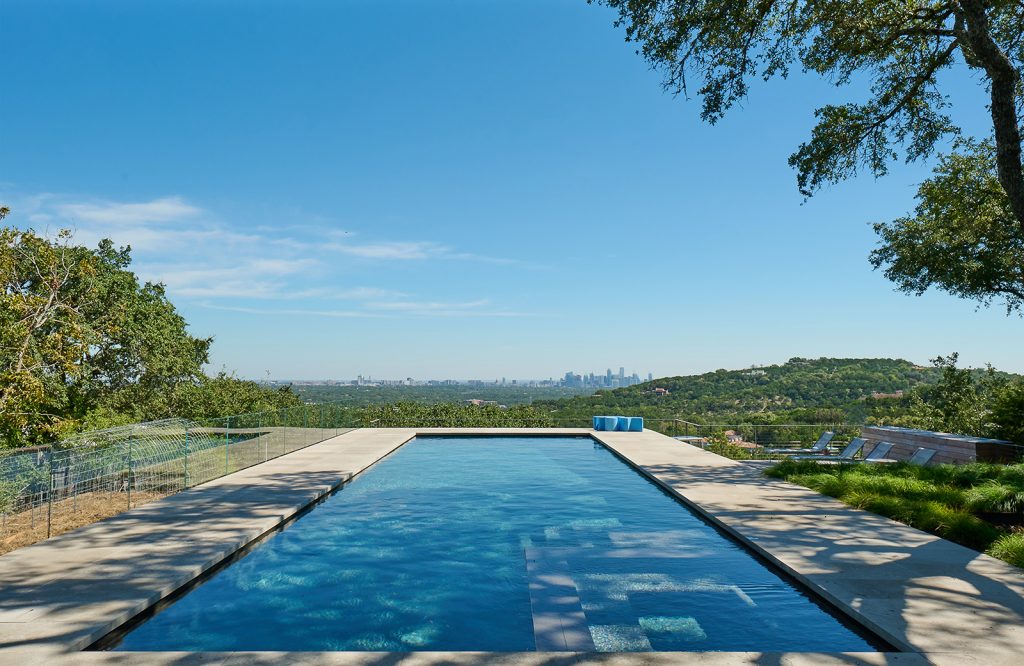ArtistEllen HimelfarbArchitectStone Fox
PROPERTY FEATURED Terrace Mountain
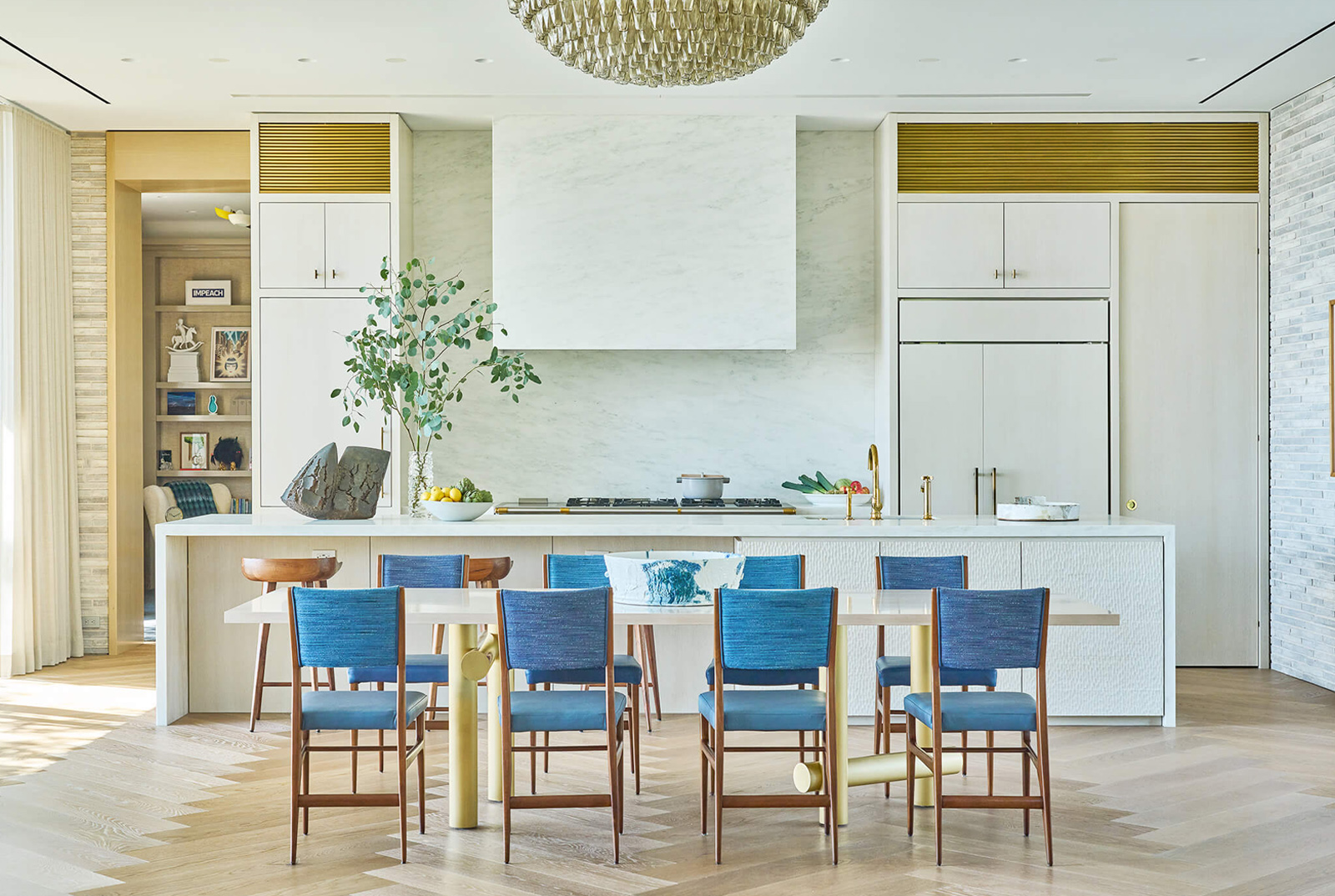
By Ellen Himelfarb
She lives among artworks by 20th-century giants in a house designed by StoneFox.
Lora Reynolds is eagerly awaiting the delivery of her most recent acquisition, a wood and leather head by the New York artist Nancy Grossman.
The head will take its place among sculptural works by Arlene Shechet, paintings by Donald Moffett and photographs by Torbjørn Rødland in an environment that more closely resembles an exotic sculpture garden like Storm King in the Hudson Valley or Fondation Maeght in the South of France than a family home in Texas. Yet here in the outskirts of Austin, the veteran gallerist has created a permanent house party out of an impressive showcase of contemporary art.
‘We have a Jeppe Hein sculpture out front that we say hello to whenever we come or go,’ Reynolds says of the reflective installation by the front walk, which echoes the perfect roundness of a Fred Eversley inside the front door. Many pieces were gifts from artists or galleries she worked with before launching Lora Reynolds Gallery in 2005 – Ed Ruscha, for instance, gifted her several small artworks over the years, stemming from her time representing him at Anthony d’Offay Gallery. She says being surrounded by her collection feels like being with the artists themselves.
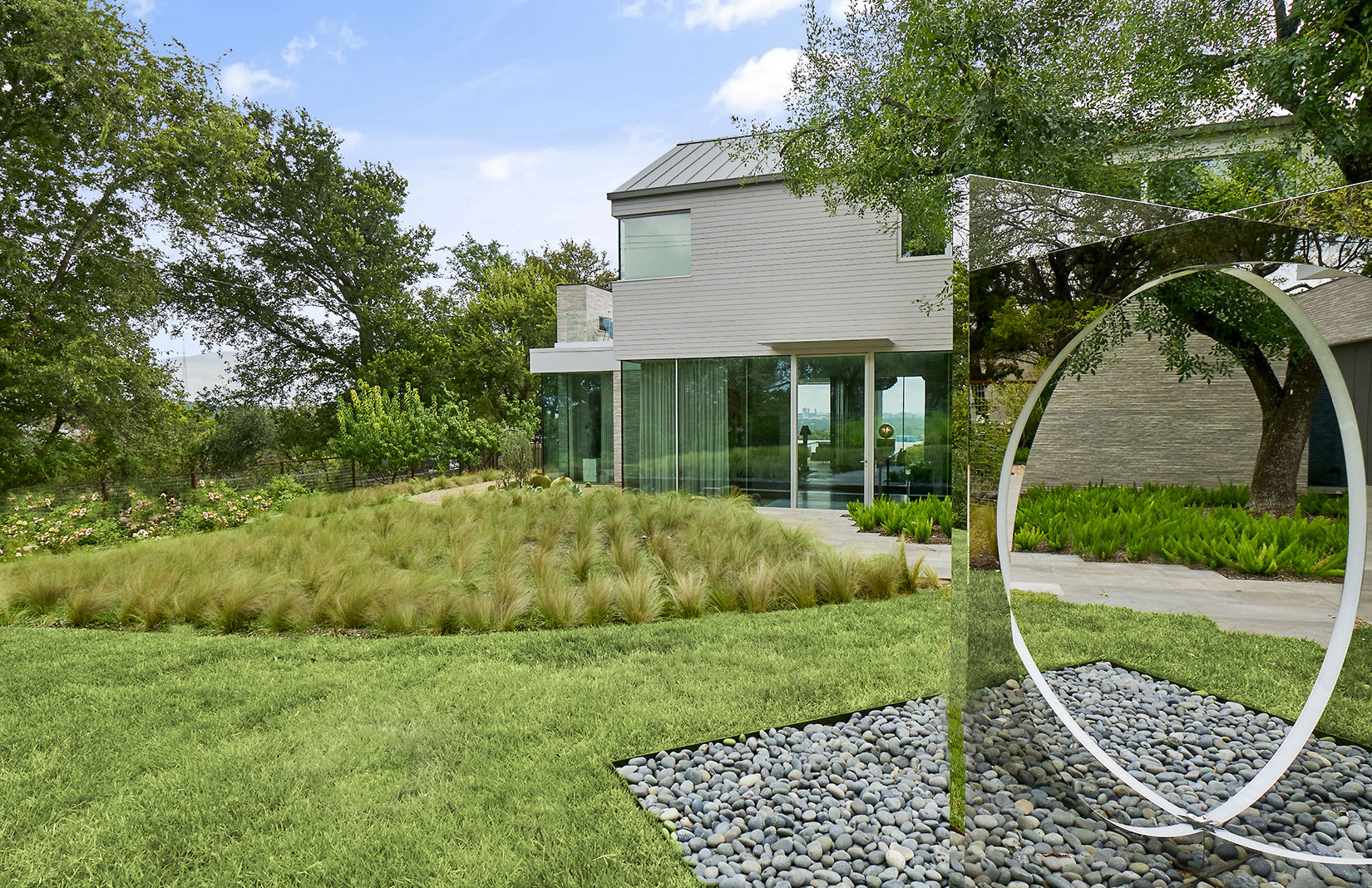
‘So much of the work throughout the rest of the house is by people I have known for years and love deeply,’ Reynolds says. ‘I’m reminded of long dinners no one wanted to end and intimate moments in the studio.’
The house is all natural light and neutrals – the quintessential habitat for an art devotee. Yet the design actually took its cues first and foremost from the hilly landscape and the panorama of valley, lake and city. In fact, when she discovered this location, Reynolds abandoned the plans she’d been concocting for another home nearby. Not one to fall prey to the sunk-cost fallacy, she immediately alerted the architects, Christopher Stone and David Fox of StoneFox, and redirected them here.
StoneFox redrafted a modernist ranch that nestles into the hillside behind two old-growth oaks. They imported handmade grey Petersen Tegl brick from Denmark to ‘disappear’ the volume into the sun-bleached landscape and topped it with a gently pitched metal roof inspired by the hill-country vernacular. As prevalent as any other material, however, is glass – wide banks of glazing to take in that landscape.
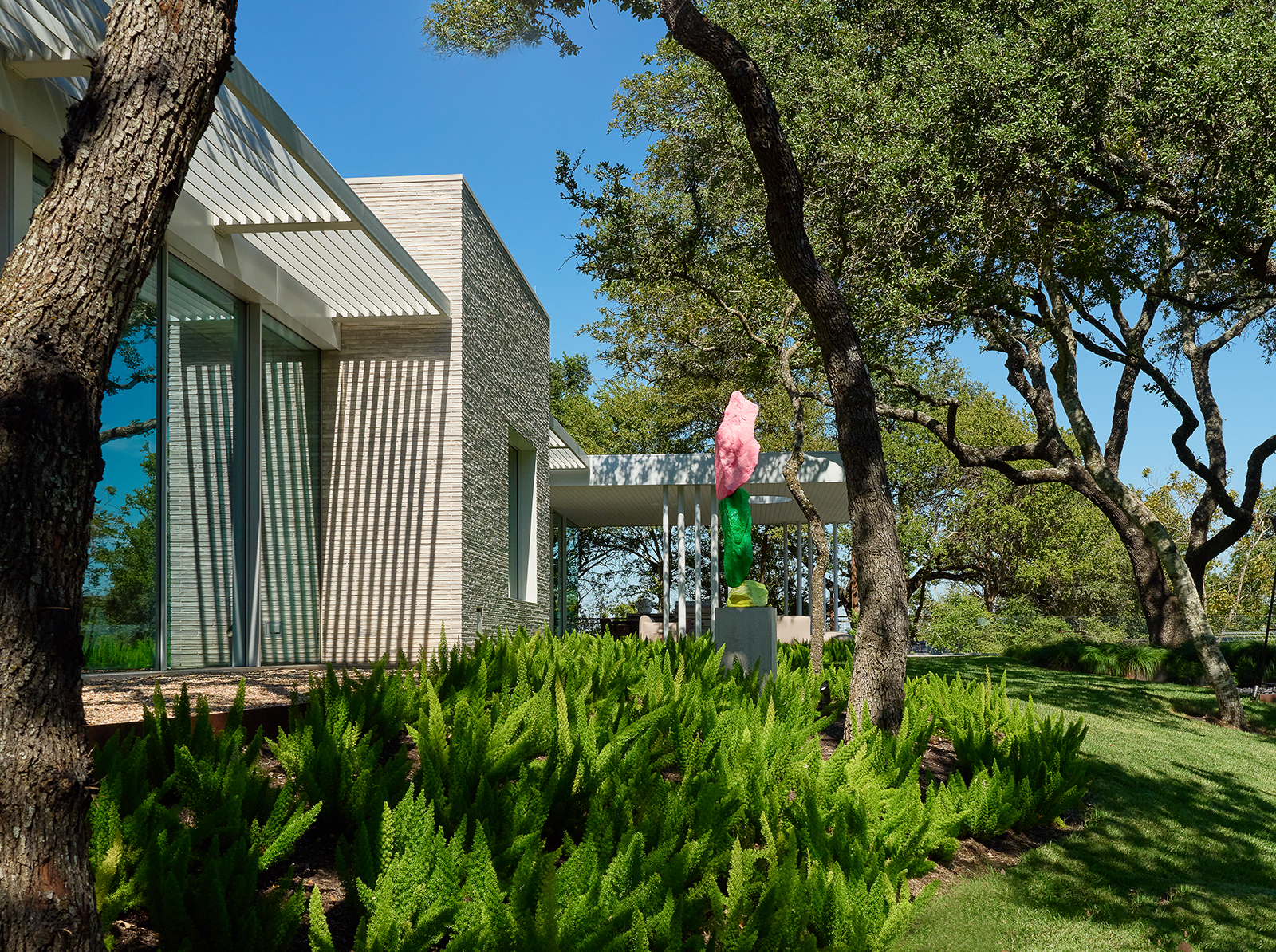
‘I jokingly lament that I built a glass house with limited wall space to show the art that’s come to live with me,’ Reynolds says. ‘But the most important role of the house is to honour the space where we built it.’
When Reynolds left New York for family life in Austin, the city was a different place. There was no Blanton Museum of Art; no Contemporary. ‘There was nowhere I could work with artists, nowhere students at UT could see great contemporary art. So I went out on a limb and opened my own gallery.’
Her goal, she says, was to bring Austin a piece of the international art world she had worked in for years, primarily with Anthony d’Offay, looking after American artists like Vija Celmins, Francesco Clemente and Jeff Koons.
In a place with so few art aficionados, it made sense to launch her tiny space with a big name: Andy Warhol. Yet by and large, she has featured artists who excite her: the photographer William Eggleston, designer Roy McMakin and language-based artist Kay Rosen among them. Even though, according to Reynolds herself, collectors weren’t exactly breaking down the door, she eventually expanded to a 1,800sq ft gallery. StoneFox designed that too.
Here on the hill, they’ve created an open-plan main floor encompassing the living room, dining room and kitchen, ‘hidden’ prep kitchen and a principal bedroom suite. Reynolds and her fiancé, gallery director Colin Doyle, spend most of their time in the ‘great room’ with its floor-to-ceiling Karl Haendel hand drawing and plenty of space for their Briard, Maltese and two ragdoll cats. Reynolds’s daughter Georgia, 18, joins them at the dining table or kitchen island to do homework (her 15-year-old son Wilder emerges from his room for meals, she jokes).

The study, where Reynolds works and often retreat to the sofa, serves as a transition between the common rooms and the master bedroom, a sexier, more tactile space with a Jim Hodges spider web and an extruded painting by Donald Moffett with a hole like a whirlpool. ‘The pieces in the bedroom are intimate, sensual. They could go anywhere in the house, but together in that space they reinforce the idea of what a bedroom means to me.’
Each room in the house is its own world, she says. ‘I often buy work from the artists I show, but there’s a big difference between giving an artist the empty white cube of the gallery versus the chaos and context of a domestic space that people and animals actually live in.’
The home’s layout is circular and fluid with art placed strategically to draw the eye. The aforementioned Eversley lines up with the front door, dining table and windows. And every room has a view to the sloping gardens, the rear vegetable patch or the sunrise.
‘The morning after our first night in the house, Colin happened to get up at dawn,’ says Reynolds. ‘He said standing in the great room made him feel like he was in the sunrise. The walls, the furniture, the art – everything was glowing orange.’
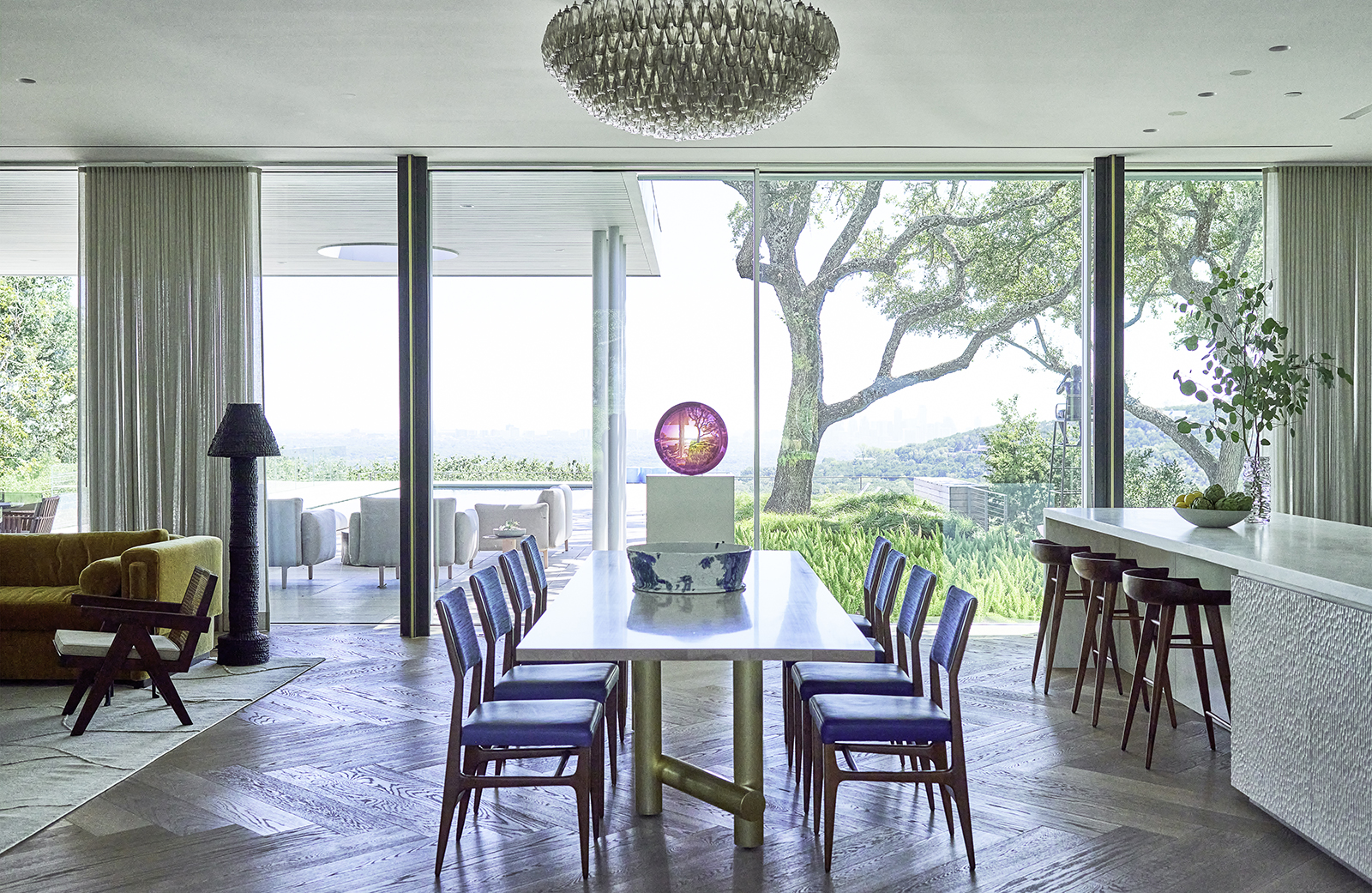
A six-foot-tall experimental photogram by Mariah Robertson hangs at the top of the stairs, ushering visitors to the upstairs family room, gym and large terrace. This is also where Georgia and Wilder sleep, past a row of bright Fergus Feehily painting-collages. ‘I think it’s an apt way to enter their world.’
The common thread among all her pieces is the surprise factor. She says their first impressions are deceiving. They lead her friends to think in all sorts of new ways.
Yet for Reynolds, the collection also functions as a family photo album. ‘It reminds me of what was happening in my life when I found a given piece. It reminds me of who I am, who I’ve been, the people and ideas that have moved me most profoundly over the years.’
